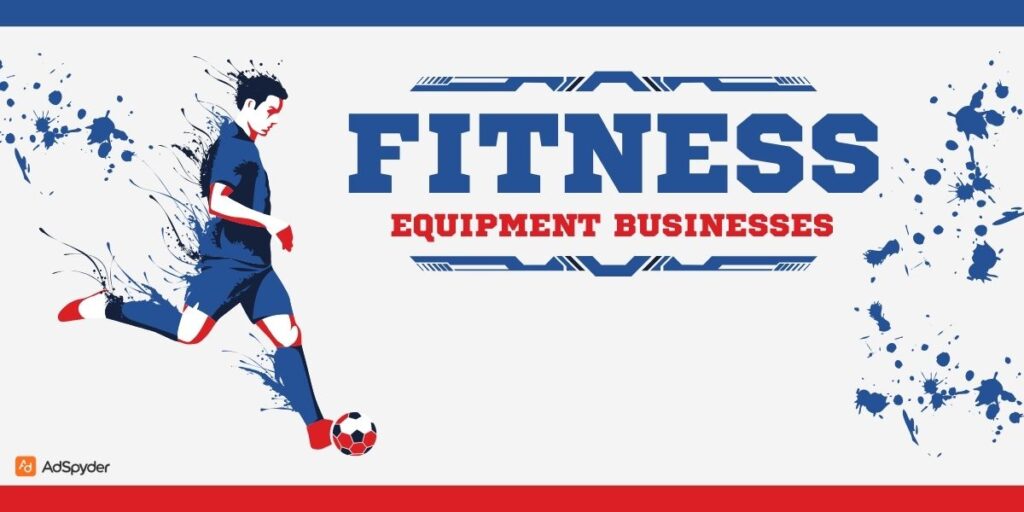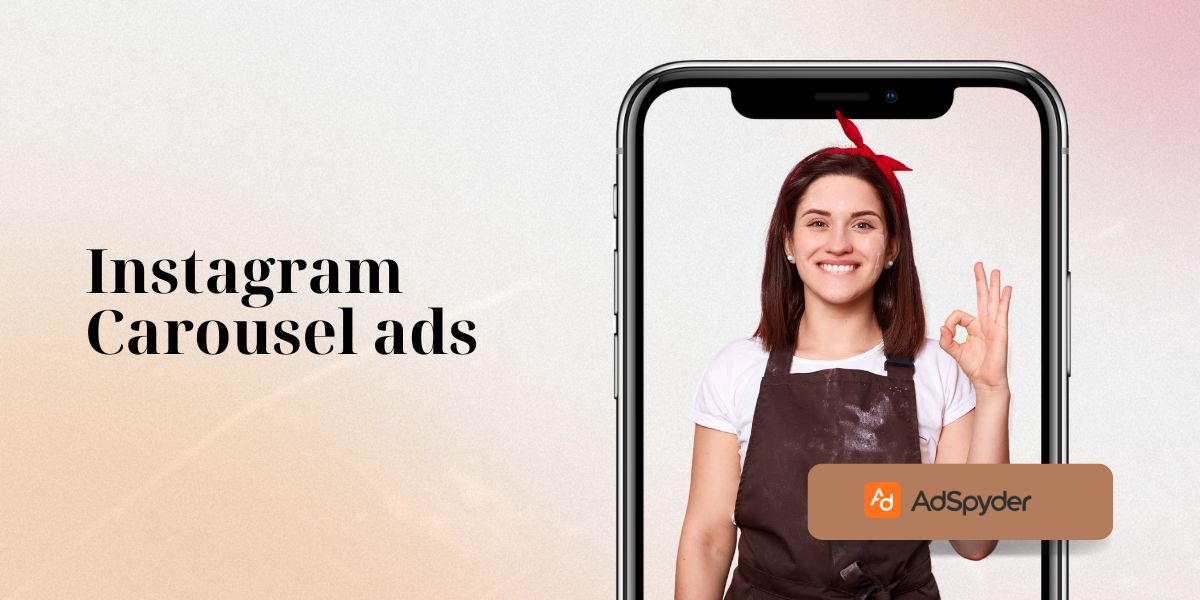As more individuals prioritise their health and well-being than ever before, the fitness sector is expanding. This is a huge opportunity for companies that sell exercise gear. However, due to the intense competition in the industry, effective marketing is essential. Reaching potential clients who are actively looking for fitness solutions is made possible by Google Ads. The complexities of Google Ads for Fitness Equipment Businesses will be covered in detail in this extensive guide, giving you the skills and tactics to develop campaigns that increase traffic, lead generation, and sales.
Ready to Elevate your Marketing Strategy?
Why Google Ads are Crucial for Fitness Equipment Businesses
In the crowded fitness market, making an impression is crucial. Google Ads offers fitness equipment companies some noteworthy advantages:
- Targeted Reach: You can target potential clients who are actively looking for exercise equipment using Google Ads. By doing this, you can maximise your return on investment by making sure that individuals who are actually interested in your items see your adverts. Consider focusing on a person who is looking for the “best treadmill for home use”; Google Ads enables this direct interaction.
- Search Visibility: Google Ads makes sure your products show up above the competition when prospective buyers look for particular exercise gear or associated terms. In order to capture interest at the time of intent, this is essential.
- Performance tracking: Google Ads offers comprehensive information that monitors how well your ads are working. By monitoring data like impressions, clicks, conversions, and cost per acquisition, you can enhance the effectiveness of your ads.
- Budget Control: The amount you spend on advertising is entirely within your control. To maximise your return and control your expenditure, you can establish daily or monthly restrictions and modify them as necessary.
- Different Ad Formats: To showcase your workout equipment in the best possible light, Google advertisements offer a variety of ad formats, such as text, image, and even video advertisements. You may adapt your advertisements to various platforms and target consumers thanks to this versatility.
- Lead Generation: Google Ads has the potential to be a very effective tool for generating leads. By directing them to landing sites with contact forms or special offers, you may get vital information from potential consumers and convert them into paying clients.
- E-commerce Integration: You may display your products immediately in search results with Google Shopping campaigns, which makes it simple for prospective buyers to peruse and buy your exercise gear.
Check Out – Sports Brand Awareness Ad Campaigns
Understanding Your Ideal Customer
Make sure your target audience is well defined before starting a Google Ads campaign. Your campaign’s success mostly rests on your ability to understand their preferences, fitness goals, and motivations. Take into account these elements:
- Demographics: Age, gender, family status, occupation, income, and place of living, among other factors. Are you targeting specific age groups, young adults, or families?
- Fitness Goals: What are their fitness objectives? Are they trying to get in shape, increase their muscular mass, strengthen their heart, or prepare for a particular sport?
- Fitness Level: Are they fitness enthusiasts who are novices, intermediates, or experts? This will affect the kinds of tools and messaging that appeal to them.
- Budget: How much have they set aside for exercise gear? Are they willing to spend money on expensive equipment, or are they searching for more economical options?
- Gym vs. Home: Are they looking for equipment for their homes or a business gym?
- Interests: What further fitness and wellness-related hobbies do they have? Do they follow particular magazines or fitness influencers?
- Sources of Information: Where do they find information regarding exercise gear? Do they rely on blogs, social media, or internet reviews?
You may better target particular parts of your target audience with your Google Ads campaigns by developing thorough customer personas.
Key Google Ad Campaign Types for Fitness Equipment Businesses
Several Google Ad campaign formats are very effective for promoting exercise equipment:
- Search Campaigns: These advertisements focus on keywords associated with particular fitness equipment categories (e.g., weight benches, ellipticals, and treadmills), fitness objectives (e.g., muscle building, weight loss), and associated terms. If potential customers search for “best adjustable dumbbells” or “home gym equipment”, your ad can appear next to the search results.
- Shopping Campaigns: Google Shopping campaigns let you display your products’ details, including photos, costs, and reviews, right in search results. Using this strategy to increase traffic to your e-commerce site is quite successful.
- Display Campaigns: You can reach potential clients on blogs, websites, and other online channels that fitness enthusiasts visit by running display advertisements. Banner advertising and captivating images have the ability to attract attention and pique curiosity.
- Campaigns on YouTube: Fitness-related content is abundant on YouTube. YouTube video advertisements are a great way to show off your exercise gear in use, highlight its advantages, and increase brand recognition.
- Performance Max Campaigns: These campaigns help you reach your target audience and meet your conversion objectives by automating bidding and ad placement across all of Google’s channels, including Search, Display, YouTube, Discover, Gmail, and Maps.
Keyword Research and Targeting for Fitness Equipment Businesses
Any successful Google Ads campaign starts with a thorough keyword research plan. You must determine the search phrases that members of your target audience use to find exercise equipment.
- Brainstorming: Start by compiling a list of relevant keywords related to specific exercise equipment categories, fitness goals, brand names (including competing brands), and related terms. Think about how potential customers might look for information about your products using different search engines.
- Keyword Research Tools: Use tools such as Ahrefs, SEMrush, or Google Keyword Planner to find high-volume, low-competition keywords. More specialised phrases or long-tail keywords can help a lot. Use “folding treadmill for a small apartment” instead of “treadmill,” for example.
- Match Types: To regulate how closely your ads are triggered by user queries, be aware of the various keyword match kinds (wide, phrase, and specific) and utilise them intelligently. Combining several match types is frequently the best strategy.
- Negative Keywords: Find out which irrelevant keywords will probably result in your advertising showing up, but are unlikely to translate into sales. This aids in targeted optimisation and helps you avoid squandering money on unqualified traffic. If you do not offer secondhand or used equipment, you might use negative keywords like “used” or “secondhand”.
- Audience Targeting: To reach particular demographics, interests, and behaviours, make use of Google’s audience targeting tools. Target fitness lovers according to their goals, favourite activities, and even how they interact with other online fitness material.
- Remarketing: Find out who has already interacted with your website or other marketing collateral. This prompts people to act (browse, add to cart, buy) by reminding them of your offerings.
- Custom Audiences: To create bespoke audiences and target your advertising to your current customers or potential consumers who have expressed interest in your exercise equipment, upload your customer data (email addresses, phone numbers).
Crafting Compelling Ad Creatives
Potential buyers form their first opinion of your exercise gear based on your advertising creativity. Making it interesting, instructive, and captivating is crucial.
- High-Quality Visuals: Make use of well-shot, high-quality photos and videos that highlight your exercise gear. Emphasise its advantages, features, and design. Display individuals making use of the equipment and reaching their fitness objectives.
- Focus on Benefits, Not Just Features: Don’t only enumerate your equipment’s technical details. Highlight the advantages that the user receives from these features. To say “5 horsepower motor,” for instance, substitute “Experience smooth and powerful workouts with our robust 5 horsepower motor”.
- Tell a Story: Create a narrative about reaching fitness objectives with your advertising creative. Demonstrate how your gear may assist people in changing their physique, enhancing their health, and leading more active lives.
- Make Use of Engaging Copy: Your advertising copy should be clear, interesting, and pertinent to your intended audience. Use language that evokes feelings in others and encourages them to purchase your workout equipment.
- Put a Clear Call to Action in There: Let prospective clients know what you expect from them. Add a conspicuous call to action, like “Shop Now”, “Browse Our Collection”, “Get a Free Quote”, or “Learn More”.
- A/B testing: Test several ad creatives on a regular basis to determine which ones work best. To maximise your campaigns, try out various calls to action, copy, and images.
Must See – Facebook Ads for Outdoor Gear
Campaign Structure and Organisation
A campaign’s structure determines how well it can be managed and optimised.
- Organised Campaigns: Plan your campaigns according to the product category (weightlifting equipment, ellipticals, treadmills), target audience segments (beginners, experienced athletes), or campaign objectives (e-commerce sales, lead generation).
- Ad Groups: Ad creatives and relevant keywords should be sorted into ad groups. This guarantees that your advertisements are extremely pertinent to the user’s search term.
- Granular Targeting: Specific audience segments can be targeted with granular targeting. This enables you to customize your advertisements to the particular requirements and preferences of various clientele.
Budgeting and Bidding for Fitness Equipment Businesses
To maximize your return on investment, you must set a reasonable budget and use a successful bidding technique.
- Budget Allocation: According to each campaign’s possible return on investment, divide your budget among them. Give top priority to campaigns that target audience segments and high-value keywords. A bigger budget might help campaigns for popular or profitable products.
- Bidding Strategies: Based on the objectives of your campaign, select the best bidding approach. Target ROAS and Maximise Conversions are two examples of automated bidding tactics that can be successful, but it’s important to keep an eye on how well they’re working. Although it necessitates more active administration, manual bidding offers greater control. The most successful bidding strategy for e-commerce is usually one that is centered on conversions or purchases.
- Cost Per Acquisition (CPA) Goals: Establish target CPA objectives to make sure your profit margins and advertising expenses are in line. Keep a careful eye on your CPA and modify your bids and targeting as necessary.
- Regular Monitoring and Optimisation: Keep an eye on how well your campaigns are performing and tweak your targeting, bids, and ad creatives as necessary. To maximize your return on investment, regular optimisation is necessary.
Measuring Success and ROI
Understanding your return on investment and making wise decisions regarding your future marketing initiatives depend on measuring the effectiveness of your Google Ads campaigns.
- Key Performance Indicators (KPIs): Determine which important indicators support the objectives of your campaign. Google Ads campaigns for exercise equipment frequently use the following KPIs:
- Clicks: The frequency that people click on your advertisements.
- Click-Through Rate (CTR): What proportion of impressions led to clicks?
- Conversions: A measure of how many desired actions (e.g., lead form submissions or website visits) individuals take after seeing your advertisement.
- Conversion Rate: What proportion of clicks led to conversions?
- Cost Per Click (CPC): Each click on an advertisement’s typical cost.
- Cost Per Acquisition (CPA): The typical price you pay for every conversion.
- Return on Ad Spend (ROAS): How much money is generated for each dollar spent on advertising?
- Website Traffic: Keep an eye on how many people are visiting your website, especially to the landing and product pages.
- Google Analytics Integration: Connect your Google Ads account to Google Analytics to monitor user behaviour and website traffic influenced by your ads.
- Conversion Tracking: To precisely gauge how well your campaigns are generating the intended actions, set up conversion monitoring in Google Ads. Maintain separate records for each type of conversion (e.g., buy, add to cart, and lead form submission).
- Regular Reporting and Analysis: Make reports on a regular basis to monitor your development and spot patterns. To determine what is and is not working well, analyse your data.
Including Google Ads in Your Whole Marketing Plan
Your Google Ads campaigns should be integrated into your larger marketing strategy for best results.
- E-commerce Integration: Google Shopping ads are essential for businesses that sell exercise equipment online. Keep your product stream current and optimised.
- Content Marketing Synergy: Provide informative articles about fitness, exercise regimens, and equipment evaluations. To increase traffic to your articles and blog posts, use Google Ads.
- Social Media Promotion: To boost exposure and expand your audience, advertise your Google Ads on your social media platforms.
- Email Marketing Integration: Expand your email list and generate leads using Google Ads. Next, nurture your leads with tailored email marketing.
- Offline Marketing Coordination: Organise your Google Ads campaigns in tandem with any offline marketing initiatives, such as in-store promotions or print advertisements.
Top Techniques for Fitness Equipment Businesses Google Ads
- Target Particular Equipment Types: Create unique marketing campaigns for the many types of exercise equipment, such as treadmills, ellipticals, and weights.
- Focus on Benefits: Don’t only highlight the features of your equipment; highlight the benefits of using it.
- Use High-Quality Images and Videos: Highlight the features and design of your equipment by showcasing it in use.
- Include Customer Reviews: Customers who are happy are more likely to build trust and make purchases.
- Offer Financing Options: Encourage financing alternatives to lower the cost of your equipment.
- A/B Test Your Ads: Try a variety of targeting settings and ad creatives to see what works best.
- Monitor Your Campaigns Regularly: Monitor your KPIs and make any corrections.
- Stay Up-to-Date: Follow the most recent developments in internet advertising and fitness marketing.
Common Mistakes to Avoid
- Ignoring Keyword Research: Ad money will be wasted if the wrong keywords are targeted.
- Using Low-Quality Creatives: Uninteresting text and subpar images will turn off potential buyers.
- Not Tracking Conversions: You can’t gauge the success of your campaigns if you don’t monitor conversions.
- Ignoring Mobile Optimisation: Many people research exercise equipment using mobile devices. Check to see if your landing pages are responsive.
- Not Including Other Marketing Initiatives: A comprehensive marketing plan should include your Google Ads efforts.
Related – Mastering Retargeting Ads for Sports Product Buyers
Google Ads for Exercise Equipment’s Future
The usage of AI-powered campaign optimisation tools, increased integration with video content and virtual exercise experiences, and more advanced audience targeting are probably in store for Google Ads for fitness equipment in the future. Staying ahead of these trends will be essential to success.
Conclusion
Google Ads provides Fitness Equipment Businesses with a strong platform to connect with their target market, get leads, and increase sales. You can develop successful campaigns that yield quantifiable outcomes and support the growth of your company in the cutthroat fitness industry by putting the tactics and best practices described in this guide into practice. To maximize your return on investment and accomplish your marketing objectives, keep in mind that constant optimisation, innovative experimentation, and a thorough grasp of your clientele are necessary.
FAQs for Fitness Equipment Businesses
Why advertise exercise equipment on Google Ads?
Lead creation, budget control, performance monitoring, search visibility, targeted reach, and e-commerce integration.
Which Google AdWords ad kinds are most important for companies that sell fitness equipment?
Search, YouTube, Display, Performance Max, and Shopping.
What constitutes a creative fitness equipment advertisement?
Excellent graphics, an emphasis on advantages, narrative, captivating writing, an obvious call to action, and A/B testing.
How can I reach prospective clients?
Custom audiences, remarketing, demographic, interest, and behaviour-based audience targeting, and keyword research.
How may campaigns be optimised?
Data analysis, performance tracking, bid strategy selection, and campaign budget optimisation.
How can I incorporate advertisements into my marketing plan?
Coordination of offline marketing, social media promotion, email marketing integration, e-commerce integration, and content marketing synergy.
How can I determine success?
Usage of Google Analytics, clicks, CTR, conversions, conversion rate, CPC, CPA, ROAS, and website traffic.




